John Hurrell – 19 March, 2024
Incorporated with the various hallucinatory experiences (auditory, visual, and tactile) that the directors experience are the very real conceptual delusions and oppressive paranoias that constantly dominate their daily thought patterns. With these experienced sufferers, Coates and his consultant psychologist advisor (in the background) build up a series of trusting dialogues to push out accessible information.
5 inner city sites
Marcus Coates
The Directors
24 February - 24 March 2024
This thing called ‘sanity’ (or—in modern parlance—‘mental wellness’) which most of us confidently assume we effortlessly possess, when in short supply can make us fail to grasp ‘the real world’. Incipient tensions can escalate to become in their most severe manifestation: psychosis.
‘Madness’ is a more popular, dated and much looser term. ‘Psychosis’ however is the subject-matter of this show, referring mainly to sporadic or longterm hallucinatory attacks accompanied by a sense of experiential falsity and surveillance paranoia, and usually not a constantly unrelenting permanent state.
To this end, the international London art organisation Artangel, along with Te Tuhi and Te Ahuei Toi o Tāmaki Auckland Arts Festival 2024, is currently presenting a Marcus Coates project (from 2022) of five short films screened in five small Auckland city (community health) venues—one film by itself in each. From Thursday to Sunday over a month. It is a remarkable endeavour, one that focusses on the nature of severe mental collapse, and trying to help an audience of ‘mentally healthy’ minds grasp what that terrifying aberrant experience involves. This is surely something of significant interest in these times of great economic stress, polarising community divisions, ubiquitous conspiracy theories and social media falsities.
Coates began his research in 2017 in South London, working closely with Dr Isabel Valli, a psychiatrist and neuroscientist. Each film presents him acting out and absorbing suggestions from chosen individuals with disturbed histories, who openly discuss with him their distressing psychotic episodes. They (Stephen Groves, Lucy Dempster, Mark Banham, Anthony Donohoe, and Marcus Gordon) all personally direct his performances filmed at different sites around London, talking with and guiding him through the recollected painful events, and developing his empathy and understanding when trying to grasp the nature of their experiences. In these collaborations, the five films are named after them.
After Coates explains psychosis to the camera, he then acts out the role of the psychotic patient from the point of view of living in their house, village or city. Sets are sometimes used, and actors playing the role of interacting friends or relatives.
For this valuable community project, here are the five short films with their associated screening sites: The Directors: Stephen (@ Toi Ora Live Trust, Grey Lynn); The Directors: Mark (@ DEMO, Mt Eden); The Directors: Anthony (@ Te Wai Ngutu Kākā, inner city); The Directors: Marcus (@ Parnell Project Space, Parnell); The Directors: Lucy (@ Yellow Brick Road, Arch Hill). Coates’ use of spaced apart screening venues is a sort of pun blending interior with interiority, underscoring the private and subjective over the collective and communal. And it emphasises fragmentation and particularity.
Inner city London of course is very different from inner city Auckland, but the urban spacing and architectural screening variations are important as Coates restlessly attempts to convey the different types of internal psychological intensity and extreme behaviour patterns—such as those caused by auditory, tactile or visual hallucinations. Often he is prodded, pushed and ‘punched’ by the coach he is interacting with.
The always affable Coates displays considerable empathy, wisdom, sensitivity, patience and curiosity in his verbal interactions with the five directors who are very particular in their varied descriptions, and also patient. Whilst the depicted violence is deeply disturbing it is not excessive or gross—it is in fact quite measured and not traumatising for the viewer. (It could be.)
Incorporated with the various hallucinatory experiences (auditory, visual, and tactile) that the directors experience are the very real conceptual delusions and oppressive paranoias that constantly dominate their daily thought patterns. With these experienced sufferers, Coates and his consultant psychologist advisor (in the background) build up a series of trusting dialogues to push out accessible information.
Now I admire Coates, Valli, Artangel and Te Tuhi enormously for furthering this project. My only quibble is that it tends to focus on the psychotic sufferer at the mercy of delusionary forces, with little talk about aggressive violent behaviour on their part where others are attacked. The directors directing are seen as victims, but when they are perpetuators there is little discussion, except when they are egged on by hallucinations such as whispering voices. So I wonder if that is the full story. Maybe it is?
The conversations are a set of collaborations that reveals its own chronological and informational processes, trying out different varieties of communicative language, attempting to grasp phenomena that appears to be residing far beyond language. To reduce the stigma of psychosis and help informed public awareness is an important aim, besides trying to describe what it is like to be in this vulnerable mental state. To aim at a more precise, sympathetic, articulation.
There is a free, takeaway catalogue packed with informative interviews and contextual information that helps understand an admirable, extremely interesting exhibition about a subject rarely openly discussed. Material not to be missed by anybody remotely interested in psychology, philosophy, medicine, art or literature.
Despite my point above, overall The Directors is a brilliant (subtly complex) show that is worth seeing more than once—each actor-directing once constantly-troubled personality interpreted and ‘translated’ by the sensitive and responsive Coates: each film positioned in its own specially allocated (Tāmaki Makaurau Auckland City) safe but accessible space. With only one viewing the project turns into a blur, a homogenous destabilising stew, but screenings seen more than once let the components become more individualistic so you appreciate the variations and different directing personalities.
Coates’ project also makes you think about your own systems of internal dialogue—structured within your hidden interiority—that occasionally flat across your mind from time to time. That is, those potentially destructive thoughts you soon dismiss as ‘too silly’ and flick off so you can get on with interacting in the ‘outside’ world. Dodgy stuff which has no impact, for your survival and use of ‘common-sense’ depends on its rejection.
John Hurrell
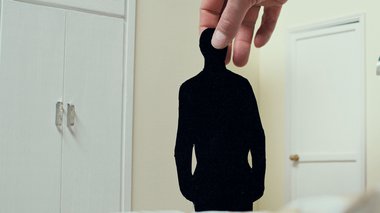
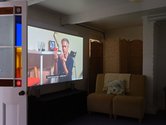
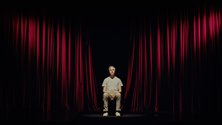
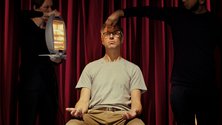
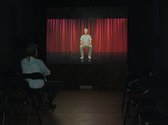

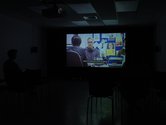
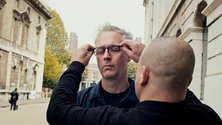
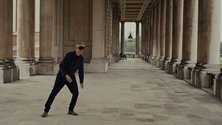

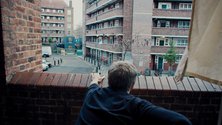
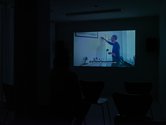
 Advertising in this column
Advertising in this column Two Rooms presents a program of residencies and projects
Two Rooms presents a program of residencies and projects



This Discussion has 0 comments.
Comment
Participate
Register to Participate.
Sign in
Sign in to an existing account.